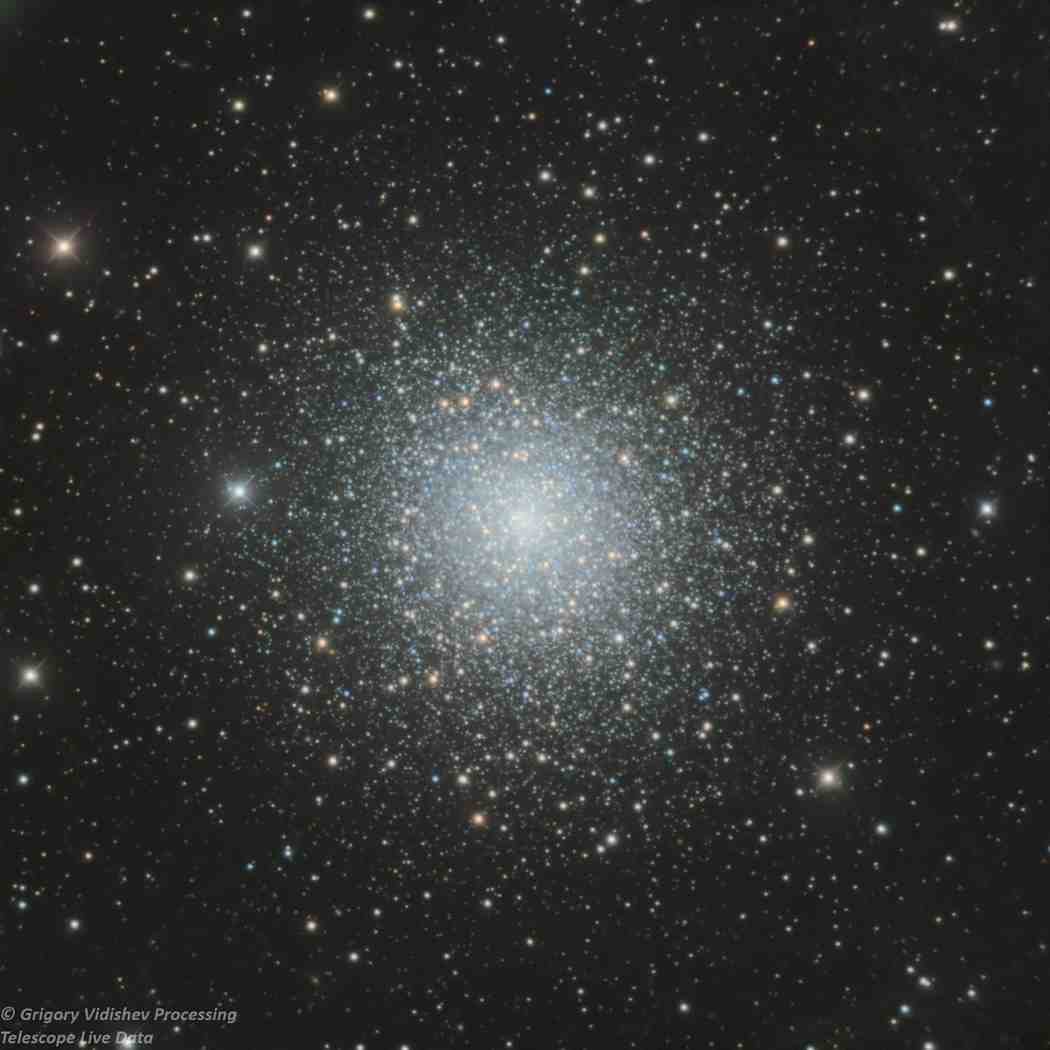

M 92 Globular Star Cluster
| Description |
Messier 92 (also known as M92, M 92, or NGC 6341) is a globular cluster of stars located in the northern constellation of Hercules. M92 was discovered by Johann Elert Bode on December 27, 1777, and later published in the Berliner Astronomisches Jahrbuch in 1779. It was inadvertently rediscovered by Charles Messier on March 18, 1781, and added as the 92nd entry in his catalogue. William Herschel was the first to resolve individual stars within the cluster in 1783. M92 is one of the brighter globular clusters in terms of apparent magnitude in the northern hemisphere, and it ranks favorably in absolute magnitude within the galaxy. However, it is often overlooked by amateur astronomers due to its proximity to the brighter cluster Messier 13, which is about 20% closer. When compared to M13, M92 is slightly less bright but about one-third less extended. Under very good viewing conditions, M92 is visible to the naked eye. Even in heavily light-polluted skies, a small telescope can reveal M92 as a nebulous smudge, which can be further resolved in darker conditions. |
|---|---|
| Data/Processing Attribution | Data was purchased from Telescope Live and I did processing only. |
| Distances/Size | Distance to the object- 3.2 million light years; angular size in the sky is about 71’ X 42’ (minutes); size of the galaxy is about 61,000 light years in diameter |
| Equipment | Mount-Software Bisque Paramount MX+ GEM; Scope- Takahashi, 106 mm aperture, 382mm focal length; Camera- QHY600 M Pro. |
| Observatory | Telescope Live, IC Astronomical Observatory, Spain. |
| Exposure | LRGB filters, total exposure- 7 hours 20 min. |
